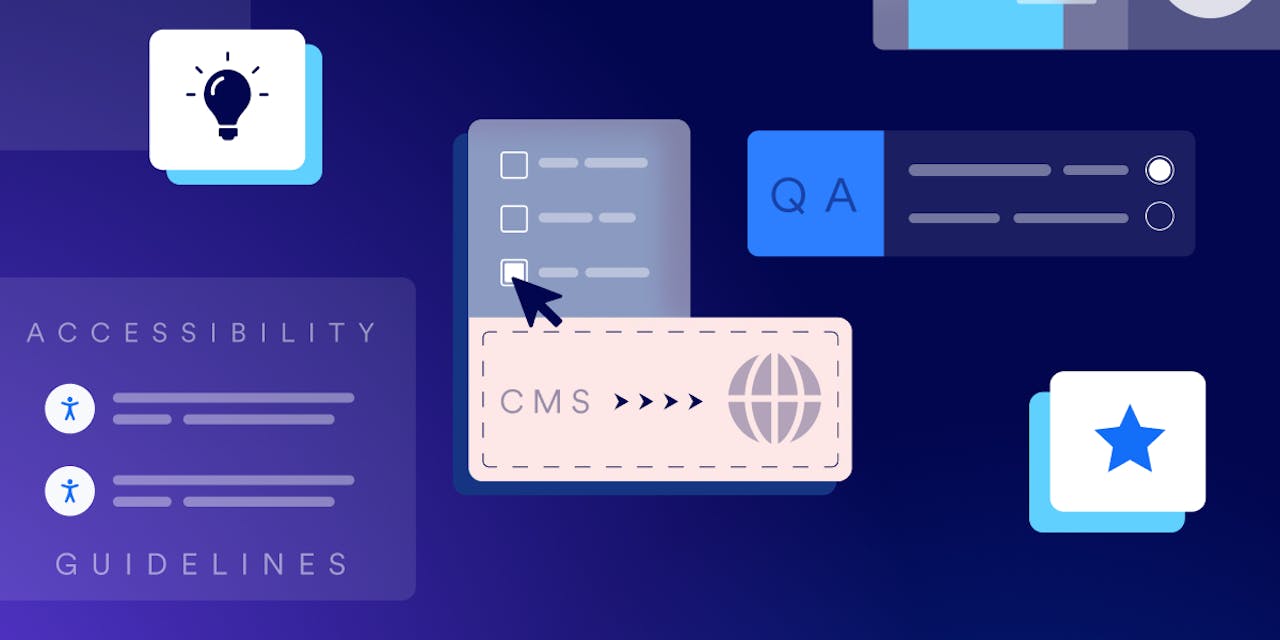accessiBe
The #1 In AI Web Accessibility Solutions and Services For Businesses Of All Sizes
Skills
Clients
Sector Experience
This promoted content is produced by a publishing partner of Open Mic. A paid-for membership product for partners of The Drum to self-publish their news, opinions and insights on thedrum.com - Find out more
Top 4 tips for a successful website launch that everyone can enjoy
December 6, 2022

As an agency, one of your top priorities is helping to prepare your clients’ business websites for a big launch. Your in-house team may be crafting the perfect copy fused with the right SEO keywords, and those quippy puns and sales-y punchlines are probably embedded in ads and visuals that represent diversity in all shapes and forms. From the technical side, your development team is probably making sure that the website’s pages are structured properly and that the customer journey is optimized from “Add to Cart” to “Review My Purchase.” But, what’s the point of launching the perfect business website if it can’t be accessed by everyone?
Advertisement
Those ads and visuals may represent a diverse customer base, but they may not be discernible for those with visual disabilities. The copy could be amazing (and it probably is). Still, chances are a screen reader can’t dictate the words properly to a user who is blind, or a person with a cognitive disability may experience barriers to digesting the language. There are so many more things to consider, as well. Like, are backlinks and page menus easy to navigate with assistive technologies? But– you get the point. So, I’ll stop here and explain why all of these accessibility aspects of your client’s new business website are so important.
While of course implementing web accessibility is, more importantly, the right thing to do, the point still stands that if 25% of the US population lives with a disability and they can’t access your clients’ newly launched website, there will be business consequences. A lack of accessibility could potentially result in a loss of website visitors and customer loyalty, a negatively impacted brand reputation, and a reduction in possible revenue. Plus, you leave your clients open to legal risk. Instead, here’s how you can better launch an accessible website for your clients:
Tip #1: Choose a solution that integrates with your CMS
Finding a web accessibility solution that seamlessly integrates with your client's business website means matching it with the CMS your agency or client is using. The hunt for such a solution can be slightly tedious, but the good news is that there are automated solutions on the market, like accessWidget, that are platform-agnostic and offer other great features that don’t impede your clients’ interface or UX design.
Automated solutions can customize your client's website according to the preferences or needs of a user with a disability, and even more, can be branded with their business’ color theme. These solutions can be swiftly integrated into a website at any stage of design and maintain compliance long term, let alone the accessibility of any updated or new content uploaded to your client's website. Attract users from the get-go, instead of starting on the wrong foot.
Tip #2: Refer to the Web Content Accessibility Guidelines
Making sure your client's website is accessible just in time for launch means consulting with the basic principles of the Web Content Accessibility Guidelines. You don’t need to comb through the entire manual (it’s quite a dense read!), but you need to understand its four principles and their guidelines: Perceivable, Operable, Understandable, and Robust. While the proper compliance and accessibility solution will do the heavy lifting for your clients, it’s still a good move to educate them on the basics so they can spot any errors ahead of a website launch, or they can brand themselves as knowledgeable on the web accessibility front. This will only elevate their standing as ambassadors of change or at the very least, make them respectfully informed of an important practice that others will appreciate greatly. Taking a stand will appeal to new website users since the majority of online shoppers today search for inclusive businesses to support.
Tip #3: Don’t forget about files and media (link to expert services)
Files and media on your clients’ websites need to be just as accessible as the rest of their digital assets. This includes videos that need transcripts or “pause” controls and documents like PDFs and Excel spreadsheets. The documents need to be accessible in the sense that they:
- Textually describe icons and graphics
- Allow for keyboard navigation (for example: with interactive elements)
- Hierarchically structure content
- Properly tag fields on forms
- Accurately structure table content and menus
Tip #4: QA the website before it goes live and continues to do so periodically
It’s imperative that you QA (test out) your client’s website before the launch date arrives. This way, you can catch any bugs or errors that can hinder the user experience before it goes live. A preventative measure such as this one will save you time scrabbling to adjust a website already in use by a large audience.
Testing in-house at your agency is a great idea, but you can double down on your efforts and use an accessibility scanner that gives you an extra heads-up on any site errors in just a few seconds. Checkers like aCe can scan for compliance level, as well, and this is important when understanding where you stand with potential legal risk with ADA and WCAG requirements. Pretty soon, all eyes will be on your client’s up-and-coming website and you want to cover all your bases before that happens.
Web accessibility matters for many reasons
As I said, being inclusive and incorporating web accessibility into your clients’ new business websites is just the right thing to do because you're standing up for a civil right and promoting equal internet access for all. However, the tips listed above could prove to be beneficial for your clients’ ROI on their website, and in other areas that include elevated brand reputation and a new stream of revenue.
Get ahead of your competitors and the big business game by launching an accessible website with your clients. You, them, and all potential customers, regardless of ability, will be glad you did.


